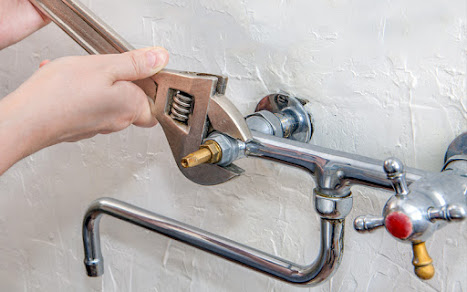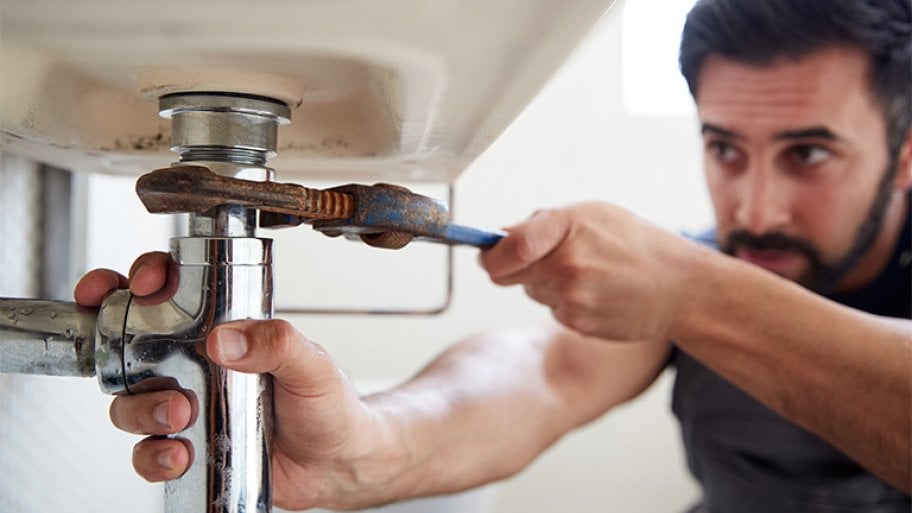Here down the page you can locate some worthwhile data in regards to Why is My Home Making Strange Plumbing Noises.

To diagnose noisy plumbing, it is very important to establish initial whether the unwanted sounds happen on the system's inlet side-in various other words, when water is transformed on-or on the drain side. Noises on the inlet side have actually varied causes: too much water stress, used shutoff and also faucet components, incorrectly linked pumps or other home appliances, incorrectly positioned pipe bolts, as well as plumbing runs containing way too many tight bends or other constraints. Noises on the drain side normally originate from poor place or, similar to some inlet side noise, a format having limited bends.
Hissing
Hissing noise that takes place when a faucet is opened slightly typically signals excessive water pressure. Consult your regional public utility if you believe this issue; it will be able to inform you the water stress in your location as well as can set up a pressurereducing shutoff on the inbound water pipeline if required.
Various Other Inlet Side Noises
Squeaking, squealing, scratching, breaking, and also tapping normally are caused by the growth or contraction of pipelines, generally copper ones providing hot water. The noises happen as the pipelines slide versus loosened bolts or strike close-by residence framework. You can usually pinpoint the place of the issue if the pipes are subjected; just comply with the audio when the pipelines are making sounds. More than likely you will certainly find a loose pipeline wall mount or a location where pipelines lie so close to floor joists or various other mounting pieces that they clatter against them. Affixing foam pipeline insulation around the pipes at the point of call need to remedy the problem. Make sure bands and also wall mounts are protected and also give adequate assistance. Where feasible, pipeline fasteners must be attached to substantial structural aspects such as foundation wall surfaces instead of to framing; doing so decreases the transmission of vibrations from plumbing to surfaces that can magnify and transfer them. If affixing bolts to framework is inevitable, cover pipelines with insulation or various other resilient material where they get in touch with fasteners, and sandwich the ends of new fasteners between rubber washers when mounting them.
Remedying plumbing runs that experience flow-restricting tight or various bends is a last hope that ought to be carried out just after getting in touch with a competent plumbing contractor. Regrettably, this scenario is fairly usual in older houses that might not have actually been built with indoor plumbing or that have actually seen numerous remodels, especially by novices.
Chattering or Screeching
Intense chattering or shrilling that occurs when a valve or faucet is turned on, and that usually vanishes when the fitting is opened fully, signals loosened or malfunctioning internal parts. The service is to replace the shutoff or tap with a brand-new one.
Pumps as well as devices such as cleaning equipments and dishwashers can transfer electric motor sound to pipelines if they are incorrectly linked. Connect such items to plumbing with plastic or rubber hoses-never rigid pipe-to isolate them.
Drainpipe Sound
On the drainpipe side of plumbing, the chief goals are to remove surfaces that can be struck by falling or hurrying water as well as to insulate pipelines to include unavoidable noises.
In new building and construction, bath tubs, shower stalls, bathrooms, and also wallmounted sinks and containers should be set on or versus resilient underlayments to lower the transmission of sound with them. Water-saving toilets as well as taps are less noisy than standard models; install them as opposed to older kinds even if codes in your location still allow utilizing older fixtures.
Drainpipes that do not run up and down to the basement or that branch into horizontal pipeline runs supported at flooring joists or various other framing existing specifically bothersome sound troubles. Such pipelines are huge enough to emit significant resonance; they additionally bring considerable quantities of water, that makes the circumstance even worse. In new construction, specify cast-iron soil pipelines (the huge pipelines that drain pipes bathrooms) if you can afford them. Their massiveness includes much of the noise made by water travelling through them. Likewise, avoid routing drains in walls shown rooms as well as spaces where individuals collect. Walls containing drains should be soundproofed as was described earlier, making use of dual panels of sound-insulating fiber board and also wallboard. Pipes themselves can be wrapped with unique fiberglass insulation produced the objective; such pipes have a resistant plastic skin (often having lead). Results are not always satisfactory.
Thudding
Thudding noise, frequently accompanied by trembling pipes, when a tap or home appliance shutoff is turned off is a condition called water hammer. The sound as well as vibration are triggered by the reverberating wave of pressure in the water, which all of a sudden has no area to go. In some cases opening a shutoff that releases water promptly into a section of piping having a limitation, joint, or tee fitting can generate the very same condition.
Water hammer can generally be cured by mounting installations called air chambers or shock absorbers in the plumbing to which the trouble shutoffs or faucets are connected. These devices allow the shock wave developed by the halted circulation of water to dissipate in the air they include, which (unlike water) is compressible.
Older plumbing systems may have short vertical sections of capped pipeline behind walls on tap runs for the exact same function; these can ultimately full of water, minimizing or ruining their efficiency. The remedy is to drain the water supply entirely by shutting off the main water shutoff and also opening up all faucets. Then open the primary supply valve as well as shut the taps one at a time, starting with the faucet nearest the valve and ending with the one farthest away.
WHY IS MY PLUMBING MAKING SO MUCH NOISE?
This noise indeed sounds like someone is banging a hammer against your pipes! It happens when a faucet is opened, allowed to run for a bit, then quickly shut — causing the rushing water to slam against the shut-off valve.
To remedy this, you’ll need to check and refill your air chamber. Air chambers are filled with — you guessed it — air and help absorb the shock of moving water (that comes to a sudden stop). Over time, these chambers can fill with water, making them less effective.
You’ll want to turn off your home’s water supply, then open ALL faucets (from the bathroom sink to outdoor hose bib) to drain your pipes. Then, turn the water back on and hopefully the noise stops! If you’re still hearing the sound, give us a call to examine further.
Whistles
Whistling sounds can be frustrating, as sometimes the source isn’t easily identified. However, if you can pinpoint which faucet or valve that may be the cause, you’ll likely encounter a worn gasket or washer — an easy fix if you replace the worn parts!Whistling sounds from elsewhere can mean a number of things — from high water pressure to mineral deposits. Your best plan of attack here is to give our plumbing experts a call. We’ll be able to determine where the noise is coming from and what the cause may be, then recommend an effective fix!
Cracks or Ticks
Cracking or ticking typically comes from hot water going through cold, copper pipes. This causes the copper to expand resulting in a cracking or ticking sound. Once the pipes stop expanding, the noise should stop as well.
Pro tip: you may want to lower the temperature of your water heater to see if that helps lessen the sound, or wrapping the pipe in insulation can also help muffle the noise.
Bangs
Bangs typically come from water pressure that’s too high. To test for high water pressure, get a pressure gauge and attach it to your faucet. Water pressure should be no higher than 80 psi (pounds per square inch) and also no lower than 40 psi. If you find a number greater than 80 psi, then you’ve found your problem!
Next step is to give us a call in order to install a pressure regulator. Trust us, you don’t want to wait to resolve this issue. Not only is the sound annoying, but high water pressure can be destructive to your home — including damaging certain appliances, like your washer and dishwasher.
Dripping
You might be accustom to the slow quiet drip your kitchen faucet makes. You might have even tuned out your bathroom sink dripping and drabbing all day long — but it’s time to find its cause.
A slow drip could signify a variety of easy to fix issues, such as a worn out O ring, or loose part. And by ignoring the drip, you could be wasting up to 2,000 gallons of water a year! So start conserving water — get it looked at ASAP.
https://www.pwessig.com/blog/2018/december/why-is-my-plumbing-making-so-much-noise-/

We are very curious about Why Do My Plumbing Pipes Make A Knocking Noise and I am praying you liked the entire entry. Sharing is nice. Helping people is fun. I am grateful for your time. Visit again soon.
For instant relief, call.